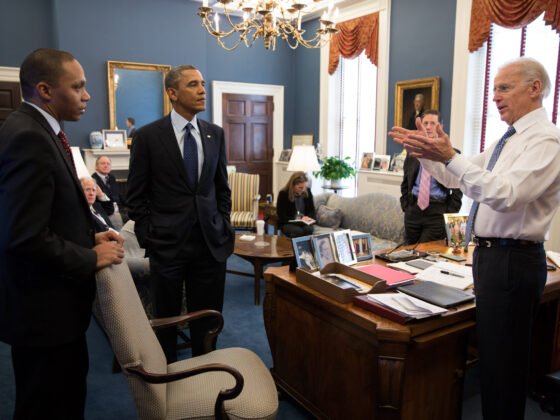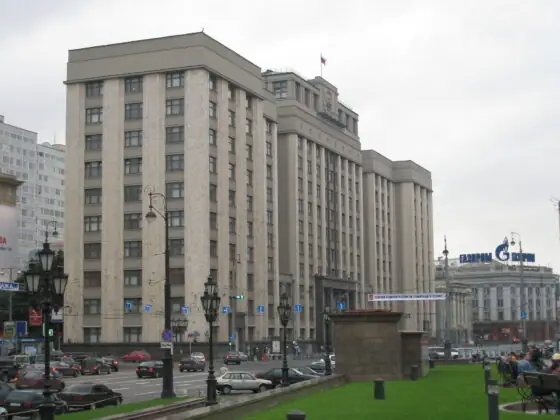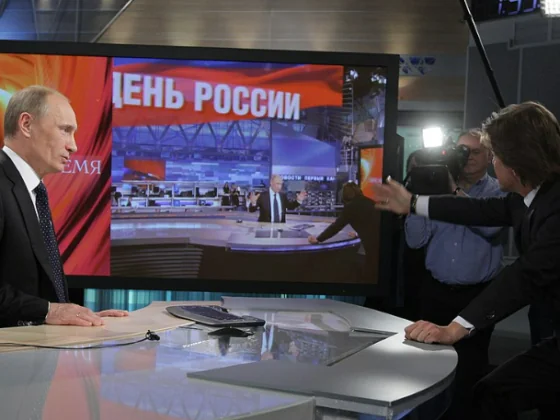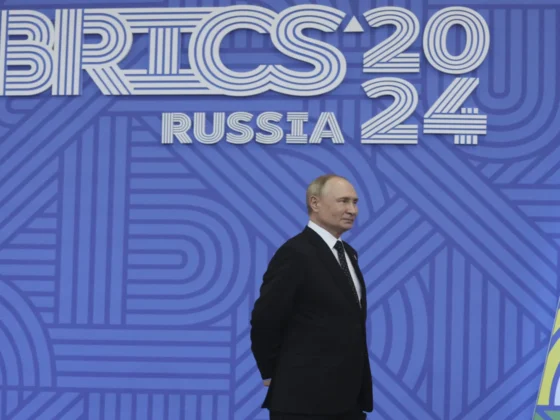
The Immortal Regiment was launched in 2012 as a private initiative. The state’s attempt to appropriate it has not been entirely successful.
► May 9, the Victory Day over Nazi Germany, has long been the main national holiday, the principal day on which Russians turn to the past. In recent years, the Immortal Regiment, a march of people carrying portraits of their ancestors who fought in the war, has brought together millions across Russia and beyond. Critics of the Immortal Regiment see in it yet another manifestation of the official memory of the war, aimed at holding together the state’s historical narrative and consolidating the regime’s legitimacy. However, Ivan Kurilla believes that the Immortal Regiment helps people preserve their family memory and that many participants do not see it as an official event.
Three Levels of Memory
Individual memory is as long as a person’s life. Family memory generally lasts for three or four generations: the grandmothers and grandfathers one remembers and the great-grandmothers and great-grandfathers one hears about from one’s parents. Some families pass down memories and documents dating back many generations, but such families are few, and in Russia they are especially rare. Four generations ago, most Russians were peasants, and peasants barely kept family archives. Those family archives that had been kept were often lost as a result of mass repressions; collectivization; wars; and massive relocations, forced or voluntary.
For its part, the official history—national memory as recorded in school narratives, commemorative monuments, national holidays, and memorial days—may be related to the age of the state itself. Young revolutionary states unabashedly break historical ties and restart their chronologies from “Day One of the Republic.” In the words of Pierre Nora, “Historical time of the revolutionary type is informed by the desire for rupture.” Those states that lean toward conservatism, meanwhile, tend to “extend” their histories by “appropriating” real or imagined ancestors—in the case of Russia, these may include ancient Rus’, Imperial Russia, and/or the USSR. Official historiographers create narratives that associate major national tragedies and achievements with the current regime.
In recent years, the memory of World War II, or the Great Patriotic War, has been going through a painful transition. On the one hand, fewer and fewer people around us have personal memories of the war. Today, almost no veterans are still active in the public space. The associations of the “children of the war,” which were until recently highly active, are gradually becoming less visible. On the other hand, the government’s desire to appropriate the memory of the war too often rings hollow, in particular because the current Russian state is younger than those memories. (Putin and other officials around him avoid the issue of the origin of Russia’s post-Soviet statehood; Putin prefers instead to talk about “one-thousand-year Russian history.”) In emphasizing past glory, the state looks a bit like a young man who decorates himself with his grandfather’s medals but is uninterested in the pain of his wounds. It was no accident that when, at the turn of the current decade, the government authorities in many Russian regions tried to substitute war reenactors for veterans in the Victory Day celebrations, those attempts proved unsuccessful—there were no genuine emotions behind young people’s impersonations of veterans.
|
“The imminent loss of family memory as veterans move to the status of great-great-grandfathers produces emotional mobilization around their feat. This may explain the stunning popularity of the Immortal Regiment.”
|
At this point in time, the most interesting development is taking place at the level of family memories. The veterans of World War II—the grandfathers and great-grandfathers of today’s young and middle-aged adults—are still present in family memories. They are a matter of family pride, and the sense of loss is not infrequently still vivid (a pain that is incompatible with decorating yourself with medals that are not your own). The tragedies and victories that befell them are incomparable to anything experienced by their children or grandchildren, and many, if not all, members of the younger generation are aware of how unique that experience was. However, the fear of oblivion hangs over those family memories—the youngest family members no longer have personal recollections of those who fought in the war. The imminent loss of family memory as veterans move to the status of great-great-grandfathers produces emotional mobilization around their feat. This may explain the stunning popularity of the Immortal Regiment.
Two Memory Topics
Russians’ historical memory has been informed by two traumas: the war and mass repressions. The understanding of the war includes the tragedy and the victory, with the latter, in the eyes of many Russians, to some degree redeeming the former. In today’s official propaganda, the victory is more important than the tragedy—a permanent body established under the president to take charge of the commemoration of the war is called “Organizing Committee Pobeda (Victory).” But at other levels, memory of the war is inextricably linked with the terrible cost of the victory.
In the Soviet Union, the memory of repressions was itself repressed for a very long period, but today’s Russia was built at a time when the memory of the hundreds of thousands executed and the millions who fell victim to famine in the 1930s, forced relocation in 1940s, and the GULAG for decades had evolved from part of individual memory to an element of national, state memory. The Russian state has incorporated the memory of repressions and the GULAG into its national history narrative (albeit avoiding the issue of causes and perpetrators of mass terror), but has kept it in the background, putting major—in fact, enormous—emphasis on the military narrative.
|
“The Kremlin’s preference for the memory of the war over the memory of repressions has prompted historical memory activists to set one against the other.” |
The Kremlin’s preference for the memory of the war over the memory of repressions has prompted historical memory activists to set one against the other. For some, the memory of the heroism and victimhood of the Soviet people in the war against Nazi Germany makes a discussion of the Soviet regime’s victims unnecessary; those victims, it is tacitly assumed, are also somehow “redeemed” by the victory and the holy sacrifice at the front. For others, it seems hypocritical to commemorate the Victory and the soldiers who fought at the front, since the state and the public do not pay tribute to the Soviet citizens who fell victim to repressions.
But at what level does such opposition exist? In individual and family memories, there is space for both the war and the repressions: they belong in the same period and, for many, even in the same life. The same cannot be said, however, for the level of “national narrative”—in this heavily manipulated discourse of the past, Russians are faced with a choice between the Immortal Regiment and the Immortal Prison Barracks.
From this perspective, those who set one memory against the other—whether state actors or their opponents—are engaged in a battle for control over the national narrative. Their fight does not concern individual or family memories.
Two “Immortal Regiments”
The history of the Immortal Regiment project has been told many times In 2012, a group of Tomsk journalists, including Igor Dmitriev, Sergey Lapenkov, and Sergey Kolotovkin, came up with a new approach to celebrating Victory Day (although many people had been thinking that a new approach was necessary, it was the Tomsk group that gave the idea a name and popularized it across the country). The Tomsk initiators came under sanctions: the TV2 station where they had all worked was closed and the owner of TV2, Viktor Muchnik, cited an unnamed official as saying that one of the reasons for the closure was his station’s “unauthorized intervention in the historical policy of the Russian state, intending to undermine its main ideological bond.”
This done, the government proceeded to appropriate their initiative. In 2015, Nikolay Zemtsov, the organizer of the Moscow Immortal Regiment march, engaged in confrontation with the Tomsk initiators. He created his own organization, Immortal Regiment Moscow, which was endorsed by the Kremlin Administration. That same year, President Putin joined the Immortal Regiment and marched across Red Square carrying his father’s portrait. As a result, today there are two competing organizations: the Immortal Regiment, which has its roots in the Tomsk project; and the Immortal Regiment of Russia, which grew out of the government-endorsed Immortal Regiment Moscow. The latter enjoys administrative support at all levels of government and is therefore perceived as a pro-Kremlin event.

President Putin joined the Immortal Regiment carrying his father’s portrait
The “capture” of this commemorative movement, however, turned out not to be straightforward. It transpired that local activists who wanted to organize an Immortal Regiment march in their cities or towns (including dozens of places beyond the Russian border) still regarded the Tomsk organizers as central to the movement. The “official” Immortal Regiment of Russia, whose goal is to fit this movement into the “state memory” framework, has failed to take over the Regiment that was conceived as a “family” affair by its original designers. The “unofficial” Regiment has adhered to this pattern: their project offers an opportunity for every participant to preserve the memory of thei family heroes.
Administrative Shifts
In summer 2018, administrative control over the Immortal Regiment of Russia was handed over to more experienced hands. At the third conference of the Immortal Regiment, Nikolay Zemtsov (now a State Duma deputy) was dismissed and management of the initiative was entrusted to the leaders of Searchers, a movement engaged in searching for the remains of soldiers killed in World War II. The movement, created in the late 1980s, has long had close relations with the government. In 2015, the Searchers leadership created a subbranch of their organization that they named “Volunteers of Victory,” which in 2018 took over the management of the official Regiment. The new bosses instantly entered negotiations with the Regiment’s initiators, apparently seeking a complete and final takeover of the original project.
|
“The ‘official’ Immortal Regiment of Russia, whose goal is to fit this movement into the “state memory” framework, has failed to take over the Regiment that was conceived as a ‘family’ affair by its original designers.” |
They took a conciliatory step toward their “competitors,” however: the Immortal Regiment of Russia suggested that the project return to the early ideals of the movement, abandoning the practice of “forced participation” that had been imposed by local administrators as well as the distribution of random portraits of veterans unrelated to the participants in the march. Instead, they suggested focusing on self-organization and family initiatives.
These negotiations were not in vain. On April 15, 2019, the two organizations signed an agreement on common organization principles for the May 9 march. Those principles included, in particular, a ban on political symbols and corporate advertisement at the Regiment march.
Just a few days later, Elena Tsunaeva, the head of the Searchers, whom journalists referred to as a “co-chair of the Immortal Regiment central headquarters” (I was unable to find any other mention of such “headquarters”), sparked off a wave of criticism directed at the movement when she said that it was acceptable for portraits of Stalin to be displayed at the march because Stalin, too, “took part in the Second World War.”
Tsunaeva’s comment was directed against the appearance in the march of Emperor Nicholas II (Natalia Poklonskaya, an ardent fan of the emperor and a Duma deputy, had previously participated in the march carrying a portrait of the last Russian tsar). Tsunaeva sought to set Stalin (appropriate) up in opposition to Nicholas II (inappropriate). But the very fact that Tsunaeva, speaking on behalf of the leadership of the joint marches, described Stalin as acceptable was interpreted by many commentators as unforgivable behavior that betrayed the Immortal Regiment’s values. The leadership of the Immortal Regiment, however, failed to respond to this statement.
Allies: Temporary and Permanent
The results of this recent alliance between the two competing Regiments are still unclear. But in recent years, the search for allies among those referred to as “mnemonic actors” has become a central element of the politics of history. Even the most powerful of these mnemonic actors, the Russian state, which is commonly described as omnipotent and ubiquitous, has made long-term and short-term alliances with a range of historical memory actors.
|
“Even the most powerful of “mnemonic actors,” the Russian state, which is commonly described as omnipotent and ubiquitous, has made long-term and short-term alliances with a range of historical memory actors.” |
One example of a long-term alliance is the state’s cooperation with the conservative wing of the Russian Orthodox Church, associated with Metropolitan Tikhon Shevkunov, the head of the Patriarch’s Council on Culture. Shevkunov is reportedly the mastermind behind the multimedia Russia: My History exhibitions that have been established in about two dozen Russian cities.
An illustration of a short-term alliance is the state’s—temporary—cooperation with Memorial, an organization that is engaged in researching Stalin’s repressions and commemorating the victims, as well as with other anti-Stalinist organizations. The director of Memorial was invited to take part in a de-Stalinization program initiated by the Kremlin. The program was eventually reduced to the erection in downtown Moscow of a national memorial to the victims of political repression, but the director of Memorial participated in discussions organized by the Kremlin.
The Immortal Regiment leaders also built their own alliances. To begin with, the original initiators picked up an idea voiced by liberals, who suggested a “merger” of the two memories: the memory of the war and the memory of repressions. Andrey Shalaev, the designer of the website Immortal Prison Barrack, originally launched as an alternative to the Immortal Regiment (if the government is so strongly focused on immortalizing the soldiers, Shalaev’s message went, we will immortalize the victims of mass terro), has cooperated with Sergey Lapenkov and other initiators of the Immortal Regiment movement, as well as with the website Moi Polk (My Regiment). Since the summer of 2018, they have also cooperated with the Community of Small Orthodox Brotherhoods, which was created by Father Georgy Kochetkov and is described as a liberal wing of the Russian Orthodox Church. The same Orthodox group has conducted its own commemorative project devoted to the victims of Stalinism.
The very appearance of alliances of “mnemonic actors” shows how heated the struggle for the past has become in today’s Russia. It also demonstrates that there is no force today capable of monopolizing the politics of memory. It turns out that even the state needs allies.
A Common Past
This struggle for the past is focused on the memory of the war, which has pulled in, as it were, the second most important topic: the memory of repressions. A significant public event of April 2019 was the release of a documentary produced by Yuri Dud’, a young journalist who had previously gained prominence for his irreverent interviews with political and artistic celebrities posted on YouTube. The film, also posted on YouTube and titled Kolyma—The Birthplace of Our Fear, has already attracted over 12 million viewers and generated a wave of comments, including from the relatively young audience. There is every reason to believe that discussion of the film will merge with the discussion of the Immortal Regiment that always follows the May 9 march.
It seems natural for these two different memories to be evolving side by side, and not only because they relate to the two major traumas of Russia’s 20th century. It is important that Yuri Dud’ belongs to the generation of young Russaians to whom the victims of the 20th century are their vanishing great-grandfathers. Dud’ is just a few years younger than Denis Karagodin, who has for several years doggedly investigated the murder of his great-grandfather in Tomsk prison in 1938.
Karagodin’s emotional reaction to the fate of his great-grandfather is not dissimilar from the emotion of those who initiated the Immortal Regiment. Both seek to preserve from oblivion the generation still present in the family memory, and this desire becomes a driver for action.
Critics of the Immortal Regiment see in it only what the government would want it to be: yet another manifestation of the official memory of the war aimed at holding together the state’s historical narrative and consolidating the regime’s legitimacy. This element is indeed there, first and foremost in the organization that calls itself The Immortal Regiment of Russia, but also in the minds of those who join the march, but do not care who organized it.
There is, however, an important argument that should prevent us from dismissing the Immortal Regiment and “banishing” it to the “museum” of government initiatives that have been used, stripped of their original meaning, and abandoned. (This is, for instance, where the St. George’s ribbon is found today.) That argument is the enormous number of people who join the Immortal Regiment marches every year.
Not one event organized by administrative order has ever brought together even one-hundredth of the millions of people who take to the streets of their cities on May 9 carrying portraits of their ancestors who fought in the war.
I do not know of any sociological surveys of the Immortal Regiment participants that would reveal their motivations. I think, however, that this motivation is such as to doom to failure the government’s attempts to exploit this energy and bring the movement under control. A survey conducted in April, in time for Victory Day, showed that fewer people than several years ago associate this day exclusively with joy, while the number of those who think of it as a day of grief has increased. The former are still more numerous than the latter, but whereas back in 2015 they were three times more numerous, today they are less than twice as many as the “grievers.” These two groups give different answers to a range of questions asked by the Levada Center—including on what, in their view, is the best way to celebrate Victory Day and whether they are going to watch the May 9 military parade on TV. All questions reveal a one-and-a-half-to-one or even three-to-one split in favor of the “joyous.”
|
“Despite the government’s attempt to tie the Immortal Regiment to official memory, many of the participants do not see it as official.” |
There is one exception: the number of those who plan to take part in the Immortal Regiment is almost equal among the joyous (34 percent) and among the grieving (31 percent). In my view, this suggest that despite the government’s attempt to tie the Immortal Regiment to official memory, many of the participants do not see it as official. Questions about joy and pride experienced on Victory Day reflect the official narrative and the debates around it, but the Immortal Regiment does not.
May 9 has long since become the main national holiday, the main day when Russian people turn to the past. Every year, these weeks in May are a time when millions of Russians can think about the past, their identity, their place in history, and history’s lessons.
The debates around initiatives such as the Immortal Regiment or films such as Kolyma generate shifts in public perceptions and deserve special attention. After all, are there other public initiatives in Russia that attract millions of participants? And are there other journalists whose documentaries about the tragic past attract millions of viewers?
The day of victory over Nazi Germany, May 9, has long been the main national holiday and the day when Russians turn to the past. The Immortal Regiment has brought together millions across Russia and beyond. Critics see it as yet another manifestation of the official memory of the war aimed at holding together the state’s historical narrative and consolidating the regime’s legitimacy. However, the marches help people preserve their family memory and many participants do not see it as an official event. This element is indeed there, first and foremost in the organization that calls itself The Immortal Regiment of Russia, but also in the minds of those who join the march, but do not care who organized it.
There is, however, an important argument that should prevent us from dismissing the Immortal Regiment and “banishing” it to the “museum” of government initiatives that have been used, stripped of their original meaning, and abandoned. (This is, for instance, where the St. George’s ribbon is found today.) That argument is the enormous number of people who join the Immortal Regiment marches every year.
Ivan Kurilla is Professor at the European University at St. Petersburg.













